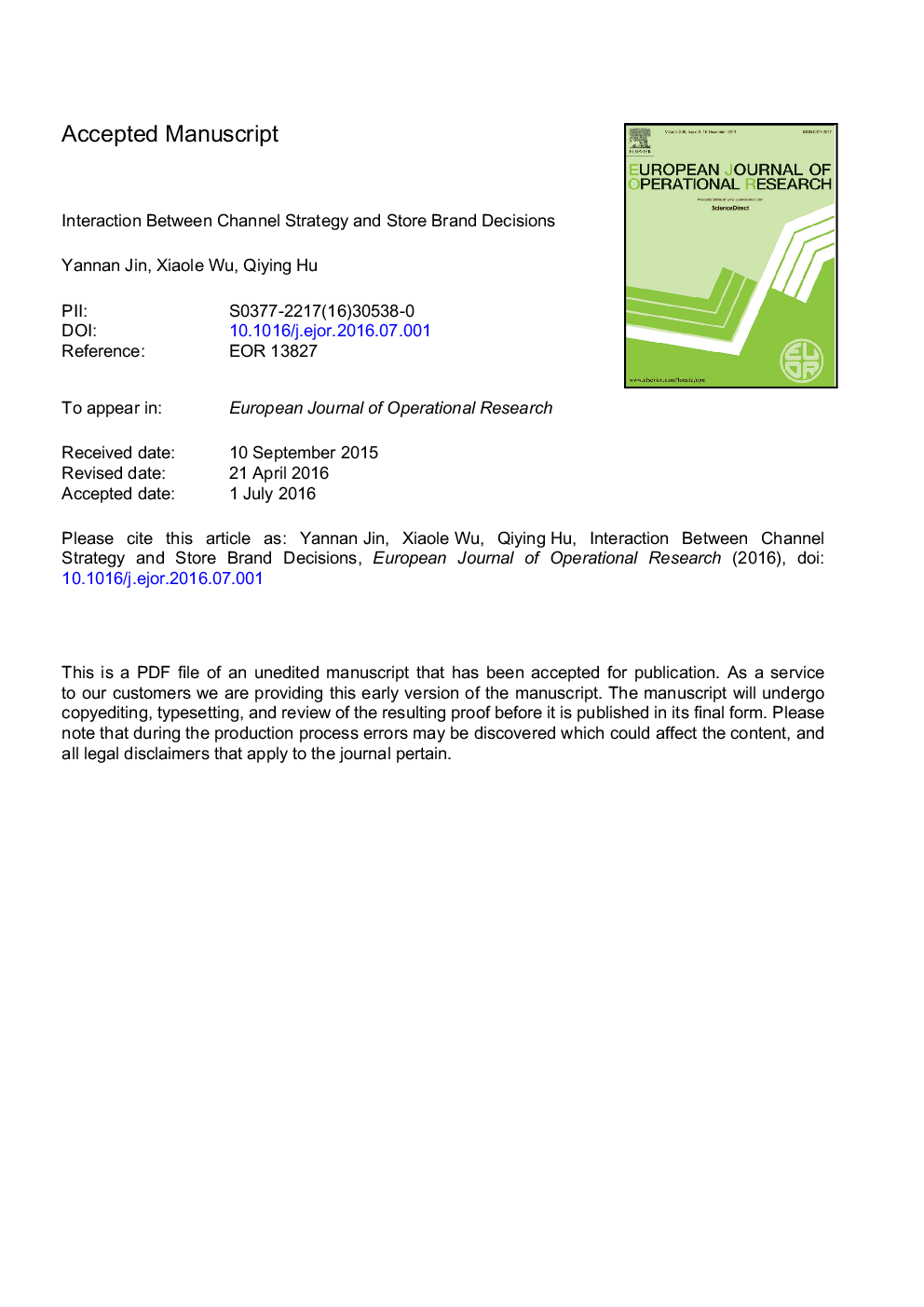| کد مقاله | کد نشریه | سال انتشار | مقاله انگلیسی | نسخه تمام متن |
|---|---|---|---|---|
| 4960164 | 1445967 | 2017 | 35 صفحه PDF | دانلود رایگان |
عنوان انگلیسی مقاله ISI
Interaction between channel strategy and store brand decisions
ترجمه فارسی عنوان
تعامل بین استراتژی کانال و تصمیمات برند تجاری
دانلود مقاله + سفارش ترجمه
دانلود مقاله ISI انگلیسی
رایگان برای ایرانیان
کلمات کلیدی
نام تجاری فروشگاه، استراتژی کانال، انعطاف پذیری قیمت گذاری
موضوعات مرتبط
مهندسی و علوم پایه
مهندسی کامپیوتر
علوم کامپیوتر (عمومی)
چکیده انگلیسی
Motivated by the prevalent store brand entry and the differing legal environments for pricing flexibility, this paper studies the interaction between a manufacturer's channel strategy and retailers' store brand decisions, under both flexible wholesale price (FWP) scheme (where the manufacturer can charge different prices to the retailers) and uniform wholesale price (UWP) scheme (where a uniform price should be offered). Under FWP scheme, a retailer has a lower incentive to introduce a store brand under single channel than under dual channel, and thus, single channel can be a strategy to prevent store brand entry. This strategy is effective when the store brands are moderately competitive. Conversely, under UWP scheme, a retailer has a lower incentive to introduce a store brand under dual channel. As a result, the manufacturer prefers dual channel, and single channel is rarely adopted under UWP scheme. Under FWP scheme, the retailers' store brand introduction decisions are mostly symmetric under dual channel due to the less dependent wholesale prices charged by the manufacturer and their ex ante symmetric roles. But under UWP scheme, a retailer may gain more profit by not introducing a store brand if its competitor has already introduced one, which gives rise to a much larger region of asymmetric dual-channel setting. We also identify two interesting impacts of increasing competitiveness of store brand. First, under UWP scheme, fewer retailers should introduce a store brand regardless of its increasing competitiveness under certain conditions. Second, in contrast to the existing literature that shows the retailer should increase the price of the increasingly competitive store brand, we find that the retailer should, instead, decrease the price of store brand when its base demand is large. Finally, we show that although the manufacturer has greater pricing flexibility under FWP scheme, he never earns a larger profit than under UWP scheme. Whereas the retailer's profit can be either larger or smaller under FWP scheme.
ناشر
Database: Elsevier - ScienceDirect (ساینس دایرکت)
Journal: European Journal of Operational Research - Volume 256, Issue 3, 1 February 2017, Pages 911-923
Journal: European Journal of Operational Research - Volume 256, Issue 3, 1 February 2017, Pages 911-923
نویسندگان
Yannan Jin, Xiaole Wu, Qiying Hu,
